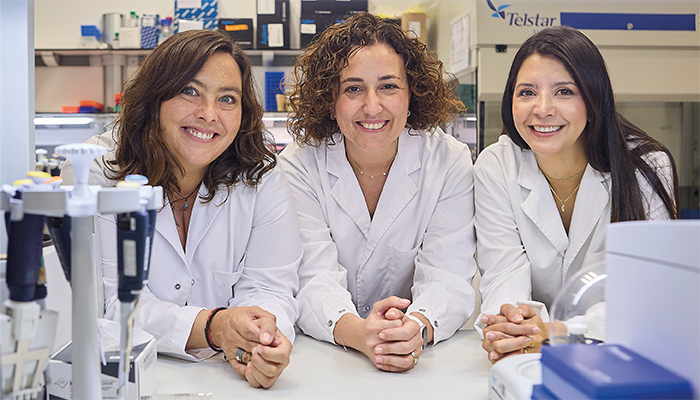Approximately 1 in 3,000 women will be diagnosed with breast cancer during pregnancy (PrBC) or postpartum period (PPBC), making it the most prevalent malignancy in this demographic (1).
The lack of reliable, sensitive, and non-invasive diagnostic and prognostic tests for early-stage breast cancer in these patients prompted researchers in Barcelona, Spain, to assess the potential of breast milk DNA sequencing (2).
To explore the research, we spoke with Cristina Saura, principal author of the paper and Head of the Breast Cancer Unit, Service of Medical Oncology, Vall d’Hebron University Hospital and Vall d’Hebron Institute of Oncology (VHIO).

Why did you focus on breast milk analysis?
Our starting point was a breast cancer patient diagnosed while pregnant with her third daughter. She was concerned that she had passed the tumor through her breast milk (BM) to her second daughter during breastfeeding – a period that lasted shortly before she was diagnosed. She brought us a sample of BM that she had stored in her freezer – more than a year before her diagnosis.
Despite knowing that breast cancer cannot be transmitted through BM, we decided to analyze the sample in search of markers that could help us in our research. To our surprise, when we examined the patient’s BM, we found DNA with the same mutation that was present in her tumor. And thanks to her, we decided to initiate a study to investigate BM-based diagnosis.
Due to the proximity of BM to the tumors in the breast, we thought it could be an alternative source for a liquid biopsy, which has been used to screen blood, saliva, and urine as a non-invasive diagnostic for solid tumors.
As with other liquid biopsy samples, we analyzed the BM and blood samples using next generation sequencing (NGS) and droplet digital PCR (ddPCR).
What were the key findings?
We have shown for the first time that breast milk obtained from breast cancer patients contains sufficient cell-free tumor DNA (ctDNA) to be detected by liquid biopsy.
It is even possible to detect ctDNA before the patient can be diagnosed using conventional imaging. We have successfully demonstrated that we would be able to diagnose early breast cancer in women postpartum by our technique – based on DNA sequencing and ddPCR analysis of BM.
We were also able to detect early signs of breast cancer in a healthy woman who enrolled in the study – which emphasizes how BM analysis could be used for prevention and prognosis of breast cancer.
Where does your approach fit in with regular breast cancer screening?
Our study focused on women during a specific period of their lives. In fact, the physiological changes that occur in the breast during pregnancy and postpartum make tumors more difficult to detect. Moreover, women become pregnant at ages when population screening with mammography is not yet carried out; in Spain, for example, these check-ups do not start until women reach the age of 50.
Our BM liquid biopsy approach could become a new tool for early breast cancer diagnosis, considering its non-invasive nature, if our initial results are confirmed in a prospective trial.
Some women might develop anxiety about breastfeeding – is this a potential problem?
Breastfeeding is a mother’s choice that they must freely take. In any case, we are only taking a sample of breast milk during the first month after pregnancy. If women freely choose to breastfeed, participating in the screening should not be a cause for anxiety.
In women that may have positive results on breast milk analysis, exhaustive additional exams will be performed to diagnose or rule out a cancer diagnosis.
We planned in the prospective trial specific psychological support for those patients to accompany them during this process.
What’s next for your research?
We need to confirm the usefulness of using BM as a new liquid biopsy tool for the early detection of breast cancer in the postpartum period in a much larger cohort.
Indeed, based on the results published, we are initiating a study to collect breast milk samples from 5,000 healthy women worldwide who became pregnant at 40 years of age or older – or women at any age who carry mutations that increase their risk of breast cancer (BRCA1, BRCA2, PALB2, RAD51C/D).
In article image credit: Vall d’Hebron Institute of Oncology (VHIO) |
Teaser image credit: The Analytical Scientist
References
- PDQ Adult Treatment Editorial Board - NCI. (2023). Available at: https://bit.ly/46Nny0G
- C Saura et al., Cancer Discov, 13, 10 (2023). DOI: doi.org/10.1158/2159-8290.CD-22-1340
